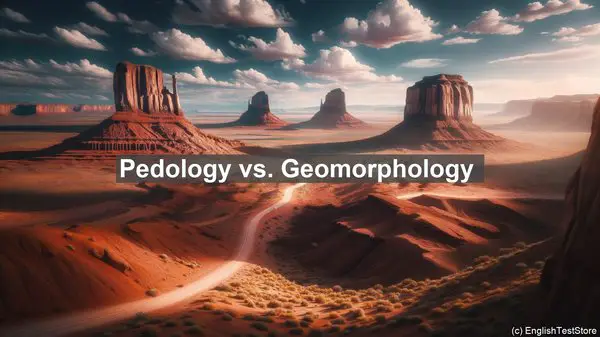Introduction
Today, we’re going to explore the fascinating world of Geoarchaeology. But before we dive deep into the subject, it’s essential to clarify some commonly confused words. These terms often sound similar or have overlapping meanings, leading to misunderstandings. So, let’s get started!
Stratigraphy vs. Sedimentology
Stratigraphy and Sedimentology are two fundamental concepts in Geoarchaeology. While they both deal with the study of rock layers and sediments, they have distinct focuses. Stratigraphy primarily examines the order and arrangement of these layers, helping us understand the chronological sequence of events. On the other hand, Sedimentology delves into the composition, characteristics, and formation processes of the sediments themselves. So, while they’re related, they address different aspects of the geological record.
Cultural vs. Natural Deposits
When examining a site, it’s crucial to differentiate between cultural and natural deposits. Cultural deposits refer to the layers formed by human activities, such as discarded artifacts, structures, or even ancient settlements. These deposits provide valuable insights into past human behavior and civilizations. On the other hand, natural deposits are the result of geological processes like erosion, sedimentation, or volcanic activity. By distinguishing between the two, archaeologists can accurately interpret the site’s history and understand the interplay between humans and the environment.
Absolute vs. Relative Dating
Dating is a crucial aspect of Geoarchaeology, helping us establish the chronology of events. Absolute dating methods, like radiocarbon dating or dendrochronology, provide a precise age in years. They’re often used when a specific timeframe needs to be determined. On the other hand, relative dating techniques, such as stratigraphic analysis or seriation, establish the sequence of events without assigning specific dates. They’re useful in understanding the relative order of layers or artifacts. Both approaches have their merits and are often used in conjunction to create a comprehensive timeline.
Provenience vs. Context
When excavating a site, archaeologists pay close attention to provenience and context. Provenience refers to the precise location or position of an artifact or feature within the site. It helps establish the spatial relationships and can provide insights into activities or patterns. Context, on the other hand, refers to the broader setting in which the artifact or feature is found. It includes the associated materials, the layer it’s in, and the overall site characteristics. By meticulously documenting both provenience and context, researchers can ensure accurate interpretations and avoid data loss.
In Situ vs. Ex Situ
In situ, a Latin phrase meaning ‘in place,’ is often used in Geoarchaeology to describe artifacts or features that are found in their original position within the site. In situ preservation is highly desirable as it retains the spatial relationships and allows for detailed analysis. However, in certain cases, such as when fragile artifacts are at risk, excavation and removal may be necessary. These artifacts are then said to be in ex situ, meaning ‘out of place.’ While ex situ artifacts can still provide valuable information, the loss of contextual data is a trade-off.

Taphonomy vs. Archaeology
Taphonomy and Archaeology are two intertwined disciplines. While Archaeology focuses on the study of past human societies through their material remains, taphonomy examines the processes that affect those remains after deposition. Taphonomic processes include everything from natural decay and weathering to human-induced disturbances. By understanding taphonomy, archaeologists can better interpret the state and integrity of the artifacts or features they encounter, helping avoid misinterpretations or biases in the data.

Microfauna vs. Macrofauna
When analyzing animal remains at a site, it’s essential to differentiate between microfauna and macrofauna. Microfauna refers to small animal remains, such as rodents or insects, that can provide insights into past environmental conditions or even human activities. Macrofauna, on the other hand, includes larger animals like mammals or birds. By studying both microfauna and macrofauna, archaeologists can gain a more comprehensive understanding of the site’s ecology and the interactions between humans and animals.
Pedology vs. Geomorphology
Pedology and Geomorphology are two branches of Geoarchaeology that focus on different aspects of the landscape. Pedology primarily deals with the study of soils, examining their formation, properties, and classification. Soils can provide valuable information about past land use, agriculture, or even climate. Geomorphology, on the other hand, looks at the broader landforms and their evolution over time. By combining the insights from both disciplines, researchers can paint a more complete picture of the past landscape and its dynamics.
